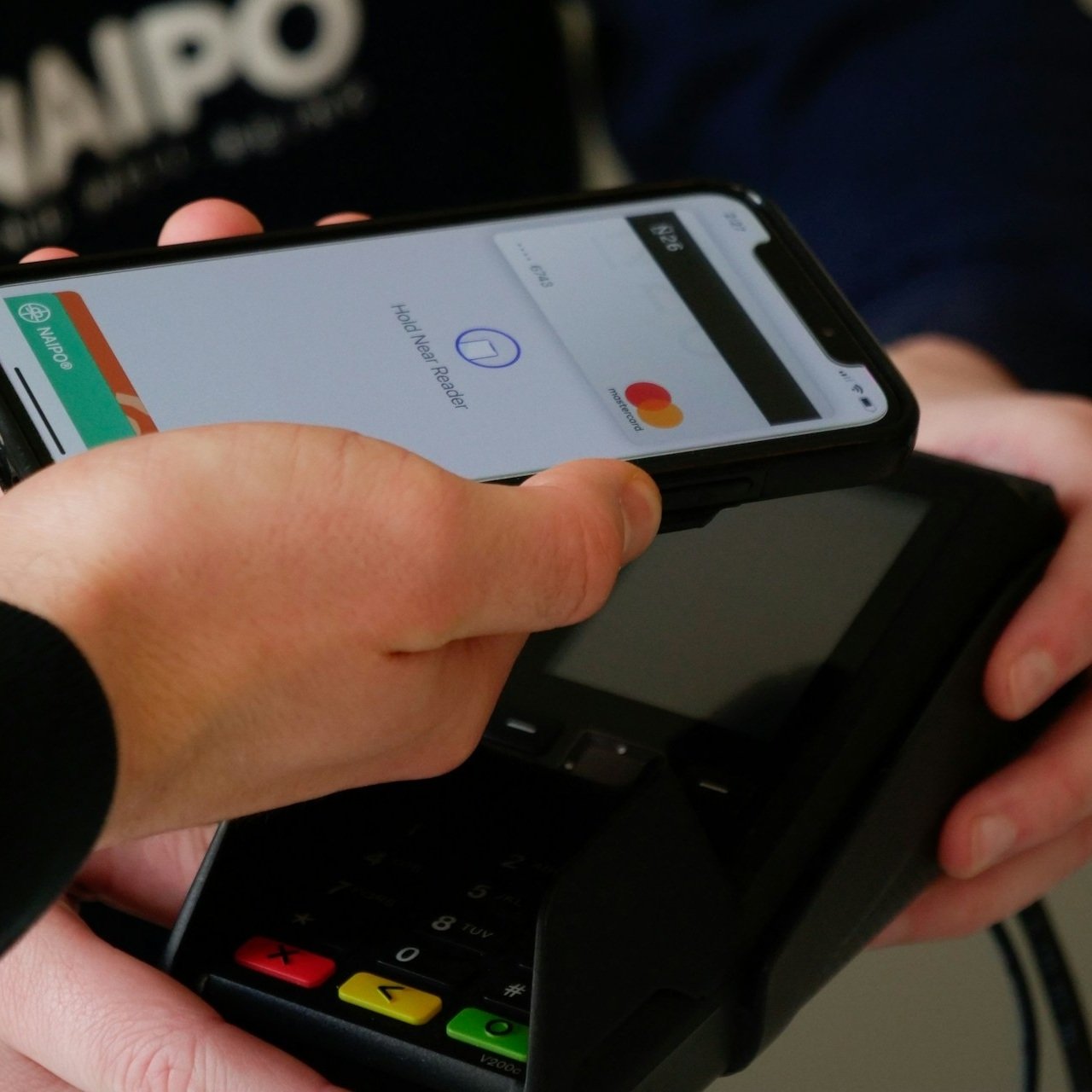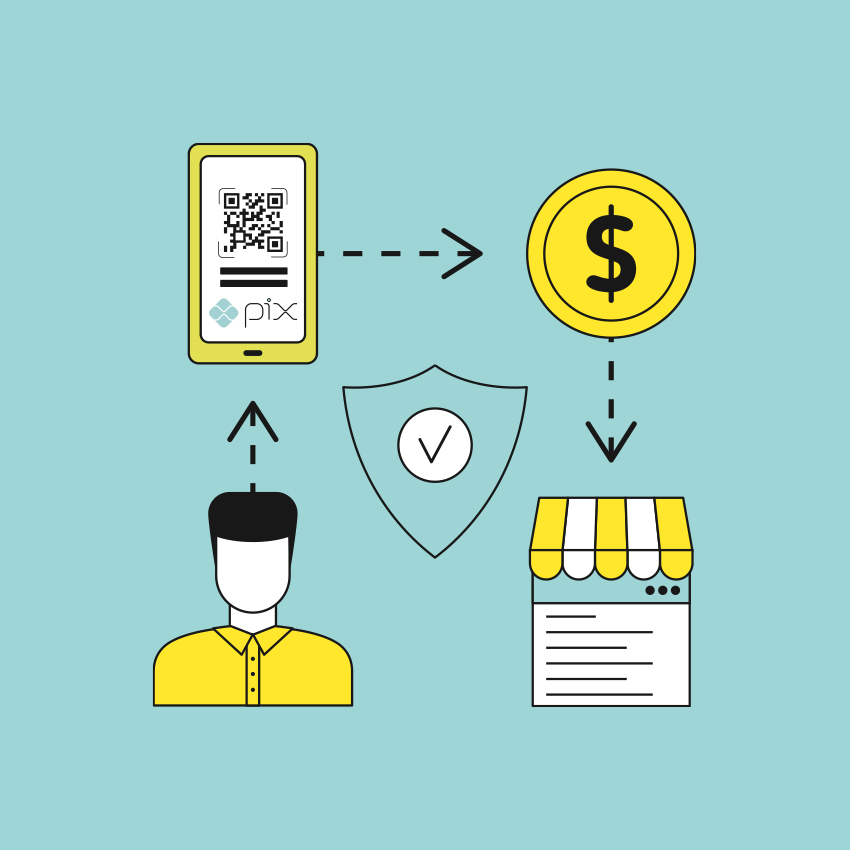They are so popular in Brazil that they have even become slang. "Boletos paid" are common expressions to refer to "bills up to date" and it is difficult to find a Brazilian consumer who has never paid or issued a boleto, or bank slip. This exclusively Brazilian payment method has the advantage of accessibility, but it did not have the best conditions for agility and innovation. For that reason, it became the target of replacement by a new — and powerful — competitor: Pix.
Knowing this, throughout this article, we will discuss the boleto payment method in Brazil, understanding its popularity in the country, the current moment of decline of this local payment method, and its comparison with other alternatives used there.
What is the boleto?
The boleto bancário is a form of bank-slip payment created in 1993 that only exists in Brazil and is regulated by the Brazilian Federation of Banks (Febraban). It has a barcode and a serial number that track payment processes up to the due date.
This alternative payment method is really popular in Brazil because it is easy to use, and customers don't need to have a bank account to use it. For this reason, a diverse range of businesses can use it, being especially popular among digital consumers who still don't feel comfortable buying online with their credit card or those without a bank account.
Therefore, in some contexts, boletos become advantageous for users who choose this option. The following information is present on the bank slip:
- drawee: data of the person who will pay the registered slip, such as name and CPF (registration of individuals) or CNPJ (national registry of legal entities);
- drawer/guarantor: information on who will receive the payment, such as name, CPF or CNPJ;
- assignor: name of the person issuing the charge;
- assignor's agency and code: agency and code of the person who provided the service or sold the product;
- value: price of the item or service performed;
- expiration: date on which the term of the bill to be paid expires;
- typeable line: composed of 48 numbers and used for payments in bank applications;
- barcode: stripes at the bottom of the boleto which is scanned for identification;
- payer's receipt: the lower part of the document, where the information from the upper section is inserted, which is kept by the drawee after the payment is made.
Boletos can be paid at the country's so-called “lottery houses”, banks and with banking apps.
How are boletos doing today?
Every Brazilian consumer, even the youngest, has seen, paid for or bought goods with this form of payment. The boleto has been in the local culture for decades and, for this reason, a significant part of Brazilian consumers consider it familiar and reliable.
However, it is important to understand that the strength of boletos has been decreasing over the last few years, which promises to accelerate in the coming years. After all, its strongest point (simplicity, practicality and the absence of bank surcharges) is even stronger in its competitor Pix. In addition, the weakest part of the boleto is not present in the new method, such as:
- delay in confirming payment that compensates between 1 and 3 business days;
- fees charged when slips are issued through banking institutions;
- manual process for payments, such as using printed paper or barcode filling.
According to the new report by Americas Market Intelligence, commissioned by BoaCompra by PagSeguro, it is estimated that the use of boletos should decrease from 10% to 8% between 2021 and 2025; while Pix is expected to rise from 15% to 31% over the same period.
The same study also points out that Pix was responsible for 15% of e-commerce volume in 2021. This is a very relevant number for two main reasons: the method was only launched in November 2020 and, in that same period, transfers bank accounts only corresponded to 2% of the sector's sales.
What is the difference between boleto and Pix?
Although similar in their proposals, these methods have unique differences that affect consumers when they choose the way to pay when finalizing the purchase.
The boleto, as discussed earlier, is very beneficial for people who do not have bank accounts or cards. However, with the advent of Pix and other relevant factors in the economic scenario, it has been losing its strength.
Pix is an instant electronic payment method made available by the Brazilian Central Bank in 2020 completely free of charge, that is, without additional fees and practically replacing the boleto bancário format.
Its differentiators are:
- instant payment, purchase confirmation takes place instantly;
- process done only with a phone using a QR Code or Pix key;
- Pix keys are personalized (personal information such as CPF, phone number or email can be used, in addition to CNPJ in the case of businesses);
- it can be accessed via digital accounts or e-wallets.
What are the most common forms of payment?
Brazilian users often use the boleto to make virtual purchases, as we have already discussed throughout the article. However, the other means of payment available in the Brazilian market still share spaces in the country. Check them out below:
Pix
As mentioned before, Pix is expected to grow from 15% to 31% by 2025. Its high growth is impressive due to its short availability time and high market acceptance. One of its unique features is multi-bank support without additional fees. For comparison, common bank transfers (in Brazil they are known as TED or DOC) needed to be made between the same bank to avoid these fees.
Pix has already surpassed the credit card in volume, when considering the total sales online and offline. The first quarter of 2022 accounted for US$124 billion, up from US$86 billion in the last quarter of 2021.
Credit cards
The possibility of paying in installments and closing the bill within one month after the purchase is still taken into account by the consumer when opting for credit cards, but this method is also losing space for Pix.
According to the report by AMI and BoaCompra, international cards are expected to drop from 10% to 8% in the next three years, while those for domestic use may suffer an even greater drop, from 46% to 37% — which reinforces the need for companies selling to Brazil to accept domestic cards and other local forms of payment.
Despite this, this is still a high number for Brazilian customers in this period: domestic-only credit cards accounted for 46% of all e-commerce in 2025, while internationally-enabled credit cards have a smaller reach, representing 10% of all online sales.
Debit card
This payment method is directly linked to the individual's bank account balance, just like with Pix or boletos.
To make debit purchases, the user must activate the feature on their card and have a balance equivalent to the purchase they want to make. Account types can be either savings or checking accounts.
The equivalence between the two also allows more advantages for Pix, which does not require a physical card. Therefore, the same report also predicts a slight drop in this use in Brazil in the coming years.
Boleto Flash: what are the advantages?
To solve issues of practicality and agility in the methods of traditional boletos in the country, BoaCompra by PagSeguro also offers in its payment platform the option to accept the Boleto Flash. This model can confirm the payment much faster than the conventional ones, with a clearing time that lasts less than 1 hour (on weekdays).
The boleto flash guarantees great advantages to your company. Among them, we can highlight:
- faster payment confirmations;
- responsive design for mobile;
- multiple selectable banks (digital or physical);
- high conversion rates.
By offering this payment option, shopkeepers are able to boost sales in the digital market in a short time.
The trick is just understanding their particularities and finding the perfect partner for local transactions. As a Brazilian company, BoaCompra dominates any subject related to the local reality and can also help you with advice on how to maximize cross-border sales in this market.
How to sell to Brazil?
Operating in the Latin American market and with extensive experience in B2B commerce for over 17 years, BoaCompra by PagSeguro is a platform that allows merchants from all over the world to accept local payments in Latin America, and also to send payouts to Brazil.
As part of the PagSeguro and UOL groups, BoaCompra is a solid financial partner with the best payment solutions available in Brazil and a specialist in risk, compliance or taxes. In addition to this experience, native customer support is available 24/7. No matter where you sell to, we'll answer your customers' questions.
By reading this article, in addition to knowing the importance of payment diversity, you were able to understand in detail what the boleto is in Brazil, its popularity in the country and the reasons why it is being less and less chosen by citizens.
Did you like the post? So, don't forget to follow us on social media by checking out our LinkedIn page, and get in touch with us by clicking below:





